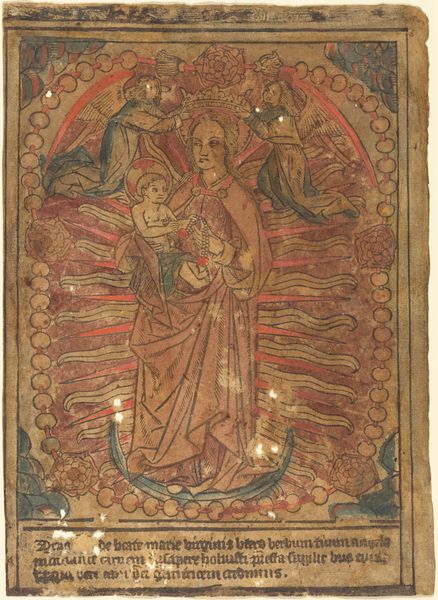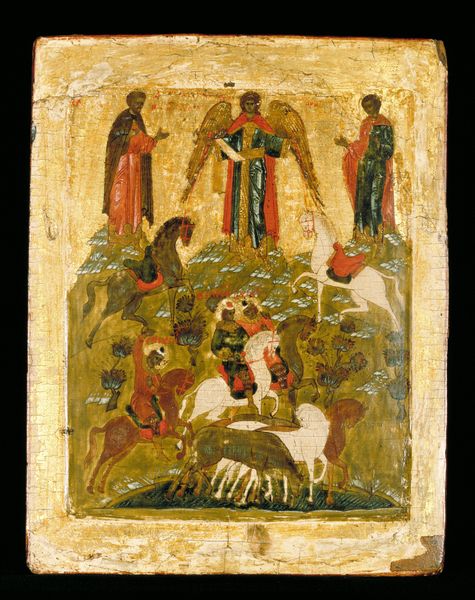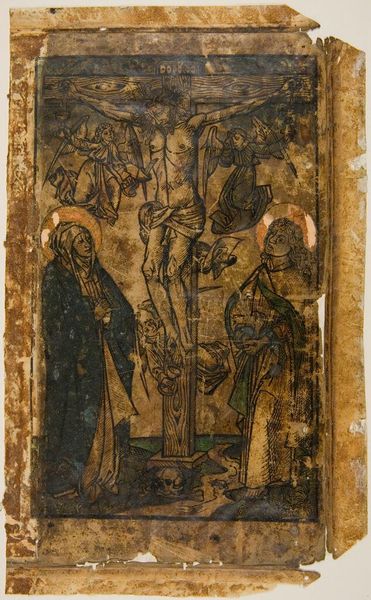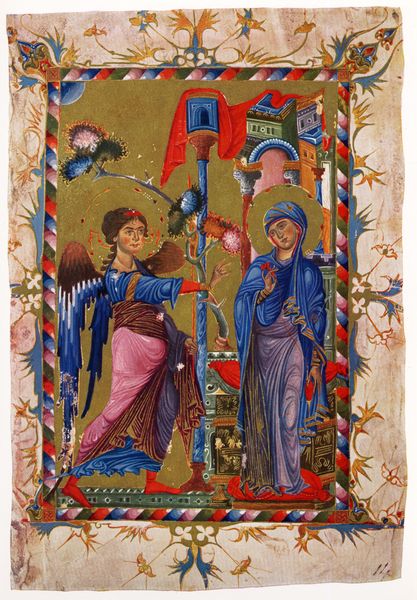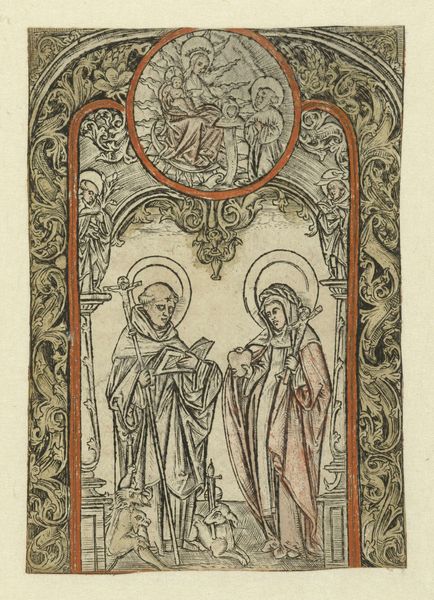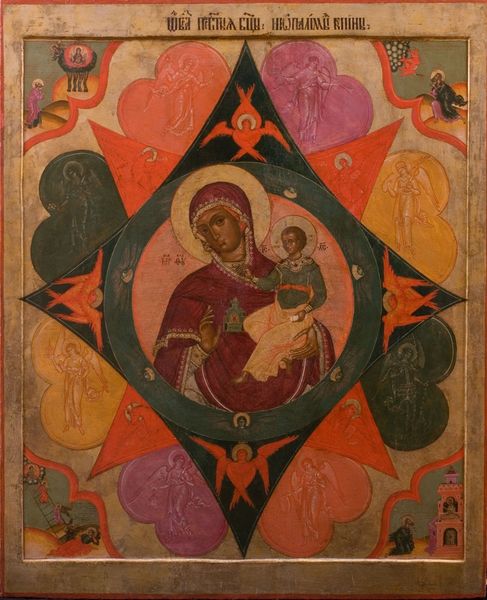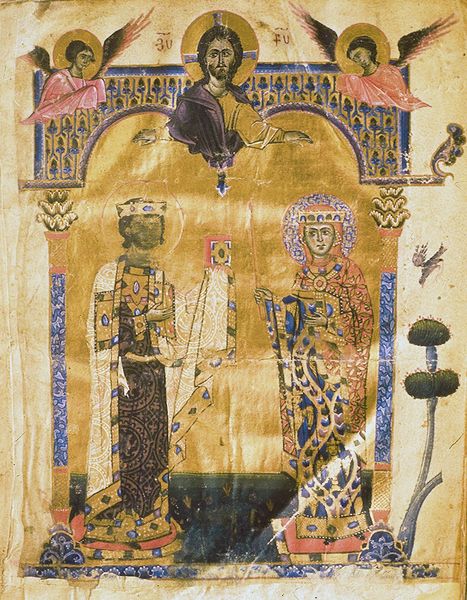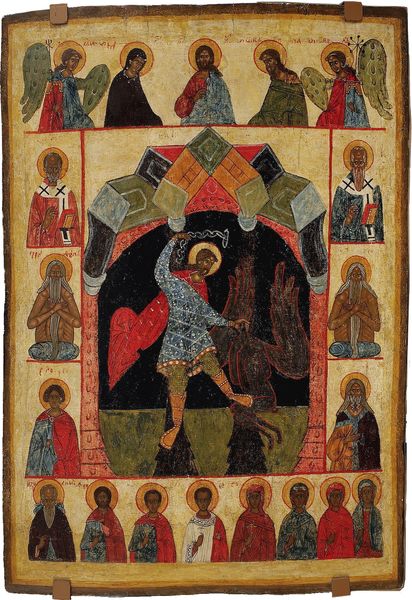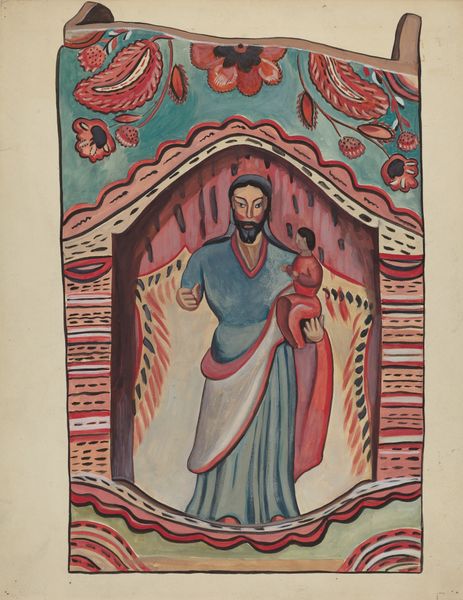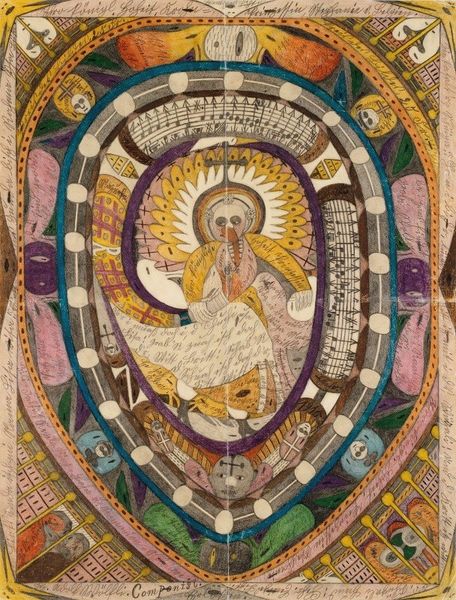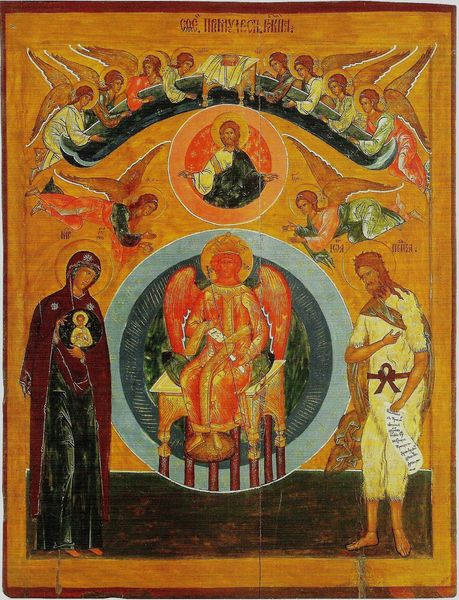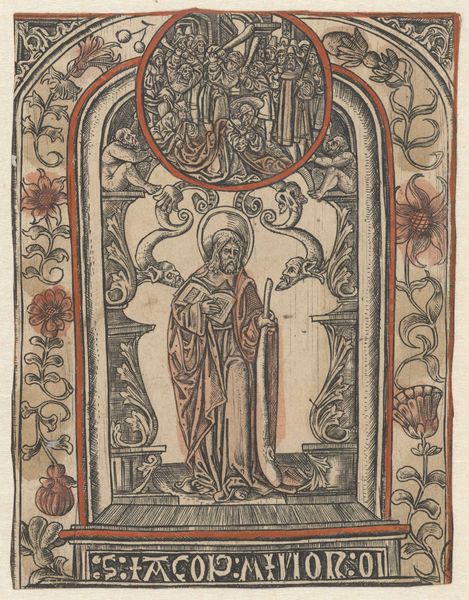
tempera, painting
#
medieval
#
narrative-art
#
tempera
#
painting
#
figuration
#
romanesque
#
miniature
Copyright: Public domain
Editor: So here we have the "Maiestas Domini", from 975, by Ende, created with tempera. It’s so striking! The way the artist uses such vibrant colours makes it feel so deliberately designed to awe the viewer, like an icon. What’s your take on it? Curator: This miniature encapsulates so much about the socio-political landscape of its time. The *Maiestas Domini*, Christ in Majesty, isn't merely a religious depiction. Think about the historical context: it appears in a period of consolidating Christian power and burgeoning monastic influence. How do you think the choice to depict Christ in this particular way – enthroned and surrounded by symbols of the Evangelists – served to reinforce the Church's authority? Editor: I guess by visually linking Christ’s power with the Church, they’re legitimising its control, like saying “God’s on our side”? Curator: Precisely! And Ende, as a female artist in this period, makes her presence known, right? The inscription *Ende pintrix et Domnus Deus adiutor meus* literally states that Ende the painter, and God is my helper. How do you see her self-identification within a traditionally male-dominated artistic sphere shaping our interpretation of the miniature? Editor: That's a fascinating detail! Knowing that, it adds another layer – this feels less like a purely devotional object and more like a statement of female empowerment within a religious framework, a sort of radical idea back then. Curator: Absolutely. These images had a very public role. The creation of religious images was heavily influenced by elite patronage networks, so considering the cultural weight, can also think about why the commissioner of such work want this made? This miniature served as an assertion of power and spiritual legitimacy, for those in charge and the very one who painted this to existence. Editor: It's amazing to think about all the social and political forces intertwined in a single artwork. Curator: Indeed. These weren’t merely aesthetic choices; they were powerful tools. It tells us of both religious and secular authority. Editor: I never would have looked at it that way if you hadn't pointed it out! Thanks!
Comments
No comments
Be the first to comment and join the conversation on the ultimate creative platform.
